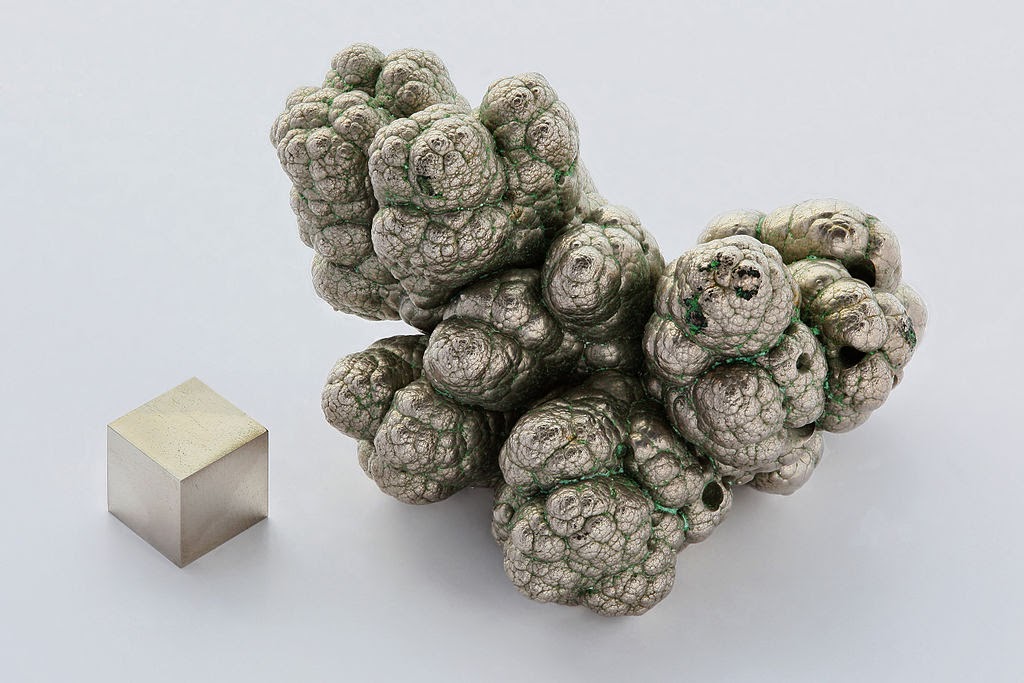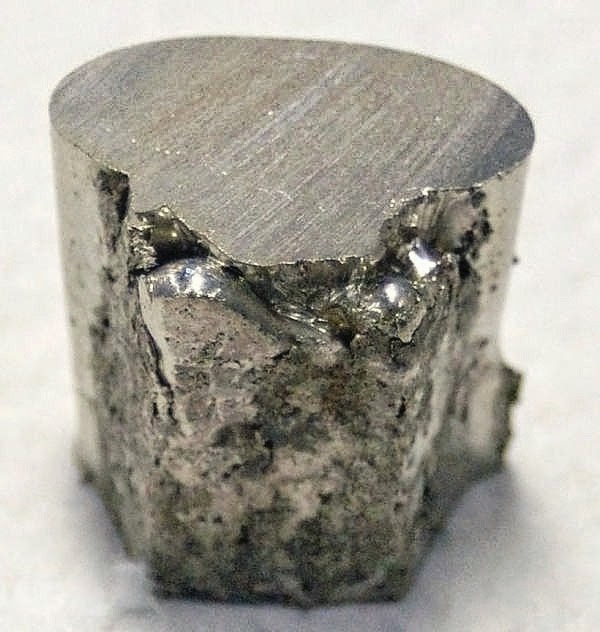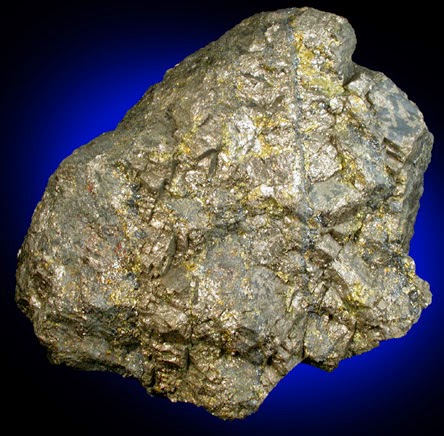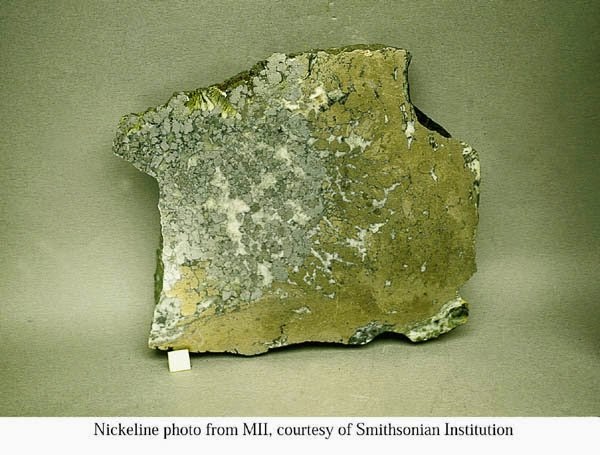
Chemical Formula: Ni
Locality: Bogota, Canala, New Caledonia.
Name Origin: From the German Nickel – “demom”, from a contraction of kupfernickel, or “Devil’s Copper”, as the mineral was believed to contain copper but yielded none when smelted.
Nickel is a chemical element with the chemical symbol Ni and atomic number 28. It is a silvery-white lustrous metal with a slight golden tinge. Nickel belongs to the transition metals and is hard and ductile. Pure nickel shows a significant chemical activity that can be observed when nickel is powdered to maximize the exposed surface area on which reactions can occur, but larger pieces of the metal are slow to react with air at ambient conditions due to the formation of a protective oxide surface. Even then, nickel is reactive enough with oxygen that native nickel is rarely found on Earth’s surface, being mostly confined to the interiors of larger nickel–iron meteorites that were protected from oxidation during their time in space. On Earth, such native nickel is always found in combination with iron, a reflection of those elements’ origin as major end products of supernova nucleosynthesis. An iron–nickel mixture is thought to compose Earth’s inner core.
The use of nickel (as a natural meteoric nickel–iron alloy) has been traced as far back as 3500 BC. Nickel was first isolated and classified as a chemical element in 1751 by Axel Fredrik Cronstedt, who initially mistook its ore for a copper mineral. The element’s name comes from a mischievous sprite of German miner mythology, Nickel (similar to Old Nick), that personified the fact that copper-nickel ores resisted refinement into copper. An economically important source of nickel is the iron ore limonite, which often contains 1-2% nickel. Nickel’s other important ore minerals include garnierite, and pentlandite. Major production sites include the Sudbury region in Canada (which is thought to be of meteoric origin), New Caledonia in the Pacific, and Norilsk in Russia.
History
Discovery date : 1967
Town of Origin : BOGOTA, CANALA
Country of Origin: NOUVELLE CALEDONIE
Optical Properties
Optical and misc. Properties : Opaque
Physical Properties
Color: Gray white, Silvery white.
Density: 7.8 – 8.2, Average = 8
Diaphaneity: Opaque
Fracture: Hackly – Jagged, torn surfaces, (e.g. fractured metals).
Hardness: 4-5 – Fluorite-Apatite
Luster: Metallic
Streak: grayish white
Photos :













